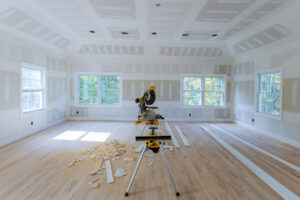San Clemente Tire Shop repairs or replaces the rubber and metal on the wheels of a vehicle. They are often able to provide other services, as well.

Typically, these businesses are recession-resistant and maintain steady demand due to the need for routine vehicle maintenance. This helps drive revenue potential. The business can also cultivate enduring relationships with customers.
From your kid’s 12” bicycle tires to 14” mining tires, almost 2 billion tires are produced around the world each year. As important as they are for providing traction and absorbing road shocks, tires also need regular inspection and maintenance to perform at their best. A tire shop is the place to go for all your needs related to your vehicle’s tires.
Your tire shop should be equipped with enough space to accommodate your inventory and vehicle service bays. You should also make sure you have enough staff to handle the workload. Your employees should have strong automotive and tire repair skills to ensure they provide a high level of customer service and meet your company’s standards.
Opening a tire shop can be an excellent business opportunity, especially in countries like the United States where cars are a primary mode of transportation. Before starting a tire shop, you need to understand the local demand for automotive and tire services, as well as your target market. You should also have a clear vision of the type of products and services you will offer. Finally, it’s crucial to find a location that has enough traffic to support your business and meets your business requirements.
There are many different types of tires on the market, and determining which ones will work for your vehicle can be a challenge. To choose the right tire, you must consider the vehicle’s weight, usage, and traction requirements. In addition, you must consider the speed rating and tread wear. The tire’s speed rating indicates how fast it is safe to drive for a sustained period of time.
Tire shops provide a wide range of services that include selling and installing new tires, repairing punctured tires, balancing tires, and wheel alignment. These services help customers get the most out of their vehicles and improve driving safety. However, these businesses face numerous challenges including talent shortages, complex inventory management, and soaring costs.
To overcome these challenges, tire shops should implement a robust business management software solution. This will digitize the various processes required to serve customers and deal with third-party vendors, making them faster, repeatable, and more efficient than manual processes. Moreover, the tool will enable your team to access data and reports to optimize operations and meet business goals.
Oil Change
A routine oil change can help extend the life of your engine, improve fuel efficiency, and reduce wear and tear. You can spot signs of a low oil level or recommended mileage interval by checking your vehicle’s dashboard or owner’s manual. You can also visit your local Point S Tire for a professional oil change to ensure your vehicle’s engine runs smoothly and efficiently.
Oil changes are a key part of any tire shop’s services, and they are one of the most common types of car maintenance service. These services typically take between 30 and 45 minutes, depending on the condition of the engine and the type of oil you choose. The oil you choose can impact how quickly your engine heats up and the performance of its components, so it’s important to understand which kind of motor oil is best for your vehicle.
Your vehicle’s manufacturer may recommend a specific brand of motor oil to ensure warranty coverage, but it is also possible to use an alternative brand. You can also find different types of oil based on your driving environment, as the higher summer temperatures can affect how fast the oil flows and how well it lubricates your engine.
Many consumers look for the most convenient and inexpensive option when they need an oil change. They often turn to quick lube shops, which offer fast and simple oil changes at a lower cost than other service providers. However, many of these chains have resources that are less than ideal for completing quality oil changes that meet your vehicle’s needs.
A reputable tire shop can provide high-quality and affordable oil changes, as well as other critical auto service, to keep your vehicle running at its peak. The service provided by ASE-certified mechanics can help you avoid costly repairs, extend the lifespan of your tires, and enjoy optimal vehicle performance.
Managing inventory, responding to inquiries, creating receipts, and reporting sales are all vital but time-consuming tasks for tire shop owners. Imagine if you could complete these tasks up to 50% faster with a single, powerful program that simplifies your day-to-day operations.
Tire Rotation
A tire rotation is a service that moves the tires on your vehicle to different positions. This helps to distribute wear evenly and extends the life of your tires. It’s a simple but effective service and should be done regularly.
The most common rotation pattern is front-to-rear, but there are other patterns for certain vehicles and types of tires. When choosing a tire shop to perform this service, you should look for one with modern equipment and highly trained technicians. You should also check online reviews and customer feedback to see what others have said about the shop.
A key benefit of tire rotation is even tire wear, which helps with traction and handling, as well as maximizing tread life. Uneven wear can lead to vibrations and an uncomfortable driving experience, so getting this service on a regular basis is important. A regular schedule of tire rotations can also help you stay on track with the maintenance schedule set by your owner’s manual.
Another sign that you’re due for a tire rotation is if you notice that your tires are wearing down more quickly than normal. This may be a result of uneven wear or an issue with your suspension or alignment. Uneven tire wear can also lead to poor gas mileage, as the engine has to work harder to propel the car.
During a tire rotation, the technician will remove each tire and wheel assembly and move it to a new position on your vehicle. This can vary based on your vehicle type, as some front-wheel drive vehicles require that the front tires be swapped with the rear, while all-wheel and four-wheel drive vehicles need to rotate the front and rear tires in a cross-diagonal pattern.
The tires on the front of your vehicle typically wear out faster than those on the back, as they are subjected to more contact with the road. This is why it’s important to keep up with your tire rotation service, as the technician will ensure that the front tires are moved to the rear and vice versa.
Wheel Alignment
Wheel alignment services are crucial to the health of your tires and the safety of your vehicle. They ensure that your wheels are angled correctly—level with the road, pointing straight ahead, and parallel to each other. This helps your tires maintain straight-line tracking, which maximizes their life. In addition, properly aligned tires help improve handling and fuel efficiency.
In order to perform a wheel alignment, a technician will first measure the angles of your tires’ contact with the road, then compare them to the manufacturer’s specifications. They will then adjust the camber, caster, and toe angles as needed. Finally, they will drive the car to ensure that the new adjustments are working as intended.
Silver notes that alignments don’t just involve setting the three primary alignment angles; they also include inspections of the vehicle’s suspension components and steering system. This level of expertise makes the difference between an accurate wheel alignment and a subpar one that could affect your vehicle’s performance.
The most common signs that your wheels are misaligned are a vehicle pulling to one side and uneven tire wear. If you ignore these signs, your tires may begin to wear out faster than they should, which can cause unsafe driving conditions. In addition, crooked wheels can make for a rough ride, so it’s best to get them fixed as soon as possible.
Regular wheel alignment and balancing can extend the life of your tires, saving you money on expensive replacements. Additionally, these services can improve your car’s handling and performance, resulting in a safer, smoother, and more enjoyable driving experience.
While you can perform a wheel alignment at home, a professional auto shop will have the right tools and equipment to ensure that your tires are properly aligned. They will also have the training and knowledge to identify any additional problems with your vehicle’s suspension, so you can rest assured that your tires are in good hands.








